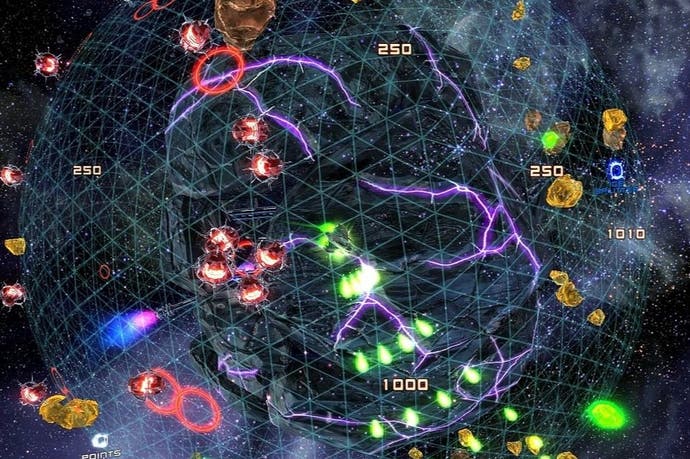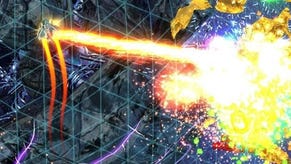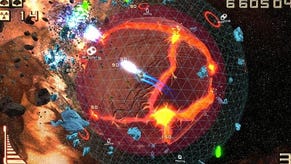Super Stardust Ultra review
Space War.
Eurogamer has dropped review scores and replaced them with a new recommendation system. Read the editor's blog to find out more.
Developer Housemarque's talent for reheating and revitalising titans of the 1980s arcade video game scene - Asteroids with Super Stardust, Defender with Resogun - has come to define Sony Europe's digital output. While Sony America has nurtured luxurious curios such as The Unfinished Swan, Hohokum and Journey, and Sony Japan tends adorable weirdoes such as Tokyo Jungle and Trash Panic, the publisher's European teams curve toward the just-one-more-go-dammit tradition of the early 1980s.
Housemarque's influence has been so pervasive that development of this upgrade to 2007's Super Stardust HD has been handled by another team within Sony Europe's twitchy fold while, fittingly, the Finnish creators of the original are off collaborating with Eugene Jarvis. Despite the change in author, all of what's here is comfortingly familiar. Super Stardust - which has its origins in the 1993 Amiga game, Stardust, co-created by one of Housemarque's founders - is best described as Asteroids pasted onto a giant sphere.
You streak freely around a planet, fracturing lumps of rock into smaller fragments using your multi-directional cannon, until they finally disintegrate into a fistful of cosmic dust. Some asteroids contain luminous green shards which yield a pick-up when destroyed: more time on the clock, an extra life, an area clearing bomb, or an upgrade to one of your three different weapons types (each of which is effective against a different type of asteroids: standard, frozen or, inexplicably, gold.)
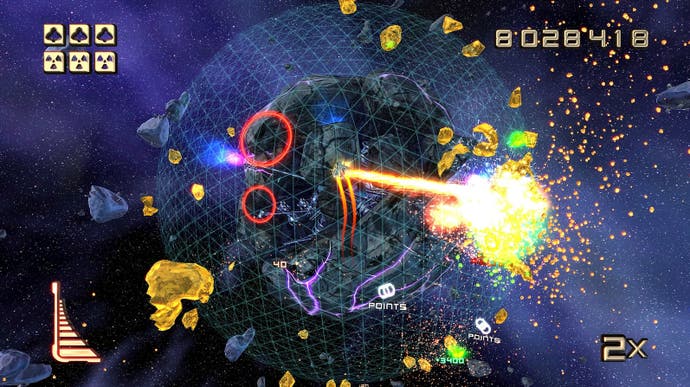
As well as your clutch of smartbombs, which are necessary for creating a pathway when the shifting maze of rocks proves unnavigable, you have a boost thrust, which allows your ship to temporarily smash through obstacles. This takes a few moments to recharge and is useful for both breaking up the largest asteroids when they initially descend, and for escaping a tough spot when all other options have been exhausted.
The ramping up of HD into Ultra is represented only by a clutch of new play modes, with the original arcade mode persisting as the game's central spine. Here, you tour five planets, each of which has five waves of attackers to see off, and the game loops back to the first planet if you manage to make it to the end intact. As in Geometry Wars 2, the other modes each concentrate on a particular aspect of play - most of which have been seen in earlier versions of the game.
In Bomber, for example, you're restricted to using bombs to clear the game field. A supply ship drops two new bomb pick-ups into play every minute or so, turning the game into a test where you dodge projectiles and choose the optimum moment at which to detonate your limited supply of explosives. In the entirely new Blockade mode, your ship is always moving forwards, laying a trail of rocks that are impervious to cannon fire. As you move around the sphere you create a network of tunnels and silos, and the challenge is to simply survive for as many seconds as possible.
These new modes are welcome - although arguably less well-defined than in Geometry Wars 2 - and each one comes with a separate leaderboard. But the inclusion of so many discrete leaderboards has come at a cost. Each one lists only the top thousand players for each mode, and so if you fail to make the top rankings, you're listed as being in position 1001 - regardless of your actual distance from glory.
Such a design must have been forced by Sony's internal rules. Most platforms constrain the number of positions there can be on a game's leaderboard, presumably to limit the potential server load. It seems like a virtue-less system at first glance, shutting out all but the most talented - or lucky - players from the rankings, but there's one positive side-effect of this limitation. Namely, you are more likely to keep playing a mode over and over in order to make the grade in a way that you might not otherwise have been inspired to, had your efforts been recorded regardless of their relative virtue.
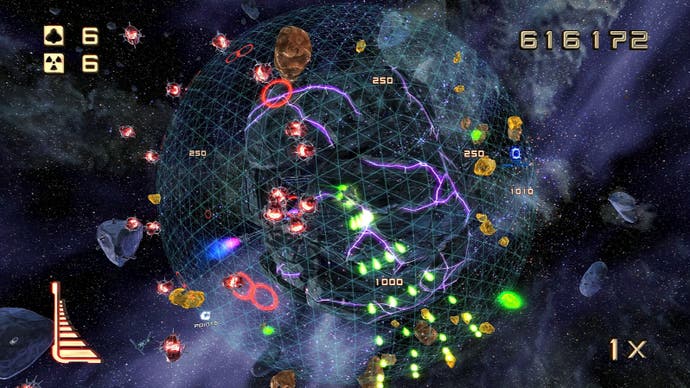
The leaderboard's shortcomings are in part made up for by the ability to challenge your friends to match your high scores, but this is done via the clunky method of issuing a missive though PSN's messaging service rather than, say, the elegant and frictionless style of EA's Autolog.
The most interesting invention on offer is the Interactive Streaming mode. Stream your game on Twitch and your internet viewers can intermittently vote to either send help or further challenge you in the form of additional enemies. It's a novelty, of course, but an interesting attempt to add complication between a game's player and the viewing audience. Expect to see more of this.
Unfortunately, online features are scarce elsewhere. Ultra's multiplayer modes are instead limited to local options, all of which are playable in a shared or split-screen variations. These have you working competitively or cooperatively for scores or, alternatively, battling it out in King of the Hill-style scnearioes.
Ultra's label insinuates that this is the ultimate realisation of Housemarque's original vision. In truth, it's little more than a re-skin, and the seasoning of novelties adds little of enduring substance. Instead, the original remains a classic. Its somewhat sterile charms are undiminished by time, and so space cadets will find much to love here, in the bustle of a perennial galactic rush hour. Veterans, however, need not apply. Whether that's testament to Housemarque's delivery of an original that could not be improved by tampering, or its new custodian's lack of vision, is another question.
